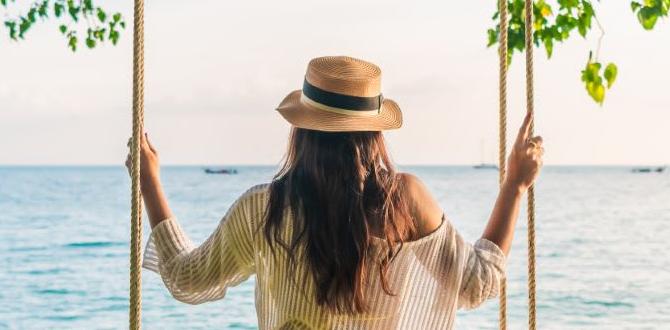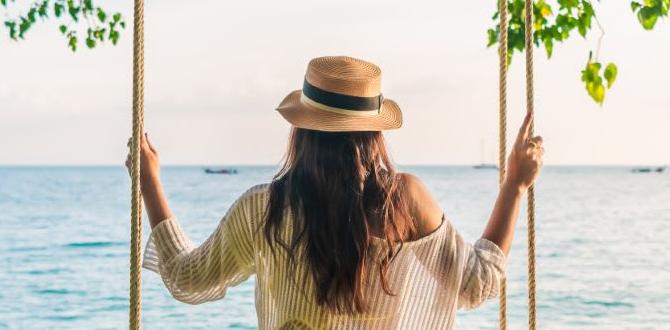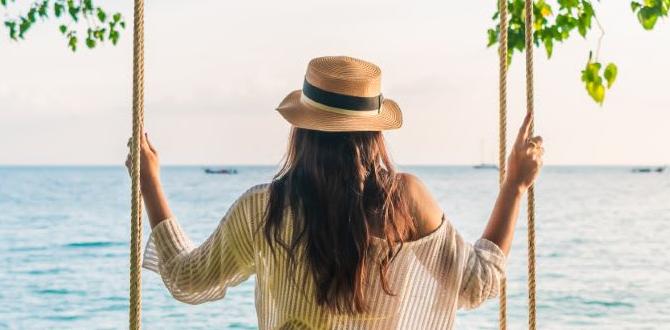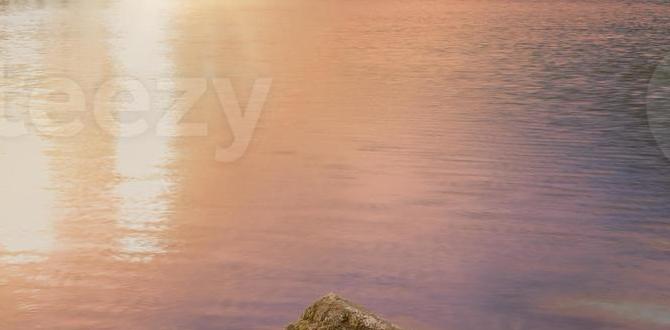Bhutan Hidden Gems Guide: Proven Must-See Destinations Unveiled for the Curious Traveler
Ready to explore Bhutan beyond the usual tourist trails? This guide reveals magical, lesser-known spots that capture the true spirit of the Land of the Thunder Dragon. We’ll help you discover breathtaking landscapes, rich culture, and serene monasteries, offering a more intimate travel experience. Get ready for an unforgettable journey off the beaten path!
Bhutan Hidden Gems Guide: Proven Must-See Destinations
Bhutan, the magical Kingdom nestled in the Himalayas, is renowned for its GNH (Gross National Happiness) philosophy, stunning landscapes, and well-preserved culture. While popular destinations like Paro Taktsang (Tiger’s Nest Monastery) and Thimphu are rightfully on many travel itineraries, the true essence and profound beauty of Bhutan often lie beyond these well-trodden paths. For the discerning traveler seeking authentic experiences and tranquility, discovering Bhutan’s hidden gems offers a deeper connection to this extraordinary nation. This guide is crafted to lead you to those unforgettable, less-explored corners, providing a roadmap to the heart of Bhutan’s magic.
Why Seek Out Bhutan’s Hidden Gems?
The allure of Bhutan is undeniable. Its commitment to preserving its environment and culture means that even the more visited sites are incredibly well-maintained. However, venturing into the less-trafficked areas unlocks a different kind of magic. These hidden gems offer:
- Authentic Cultural Immersion: Interact with local communities without the crowds, observe daily life, and gain a genuine understanding of Bhutanese traditions.
- Unspoiled Natural Beauty: Explore pristine valleys, remote mountain trails, and untouched forests teeming with unique flora and fauna.
- Spiritual Serenity: Discover secluded monasteries and temples where you can experience profound peace and quiet reflection.
- Unique Photographic Opportunities: Capture landscapes and scenes that are rarely seen, offering a fresh perspective on Bhutan.
- A Deeper Sense of Adventure: Step a little further outside your comfort zone and experience the thrill of true discovery.
Planning Your Bhutan Adventure: Essential Considerations
Before we delve into the hidden gems, it’s crucial to understand Bhutan’s unique tourism policy. To maintain its high-value, low-impact tourism model, all tourists (except those from India, Bangladesh, and Maldives) must book their trip through a licensed Bhutanese tour operator and pay a Sustainable Development Fee (SDF). This fee contributes to Bhutan’s development, while the mandatory guide ensures a safe, enriching, and culturally sensitive experience. For detailed information on current regulations and fees, the official tourism website of the Department of Tourism, Royal Government of Bhutan is the most authoritative source.
When packing, comfort and practicality are key, especially when exploring remote areas. Think layers for varying altitudes, sturdy walking shoes, and essentials that ensure a stress-free journey. For travelers who might need extra support for long days of exploration or specific travel needs, consider discreet and reliable personal care items. Products like Depend bladder control pads can offer peace of mind, allowing you to focus entirely on the breathtaking scenery and cultural encounters without concern.
Bhutan Hidden Gems: Proven Must-See Destinations
Let’s uncover the destinations that promise to enchant you:
1. Haa Valley: A Serene Cultural Haven
Often overshadowed by its more famous neighbor, Paro, the Haa Valley offers a glimpse into a more traditional Bhutanese way of life. This picturesque valley is one of the westernmost districts of Bhutan and boasts stunning natural beauty, ancient temples, and a peaceful atmosphere.
Why visit Haa Valley?
- Lhakhang Karpo (White Temple) and Lhakhang Nagpo (Black Temple): These ancient temples are central to the valley’s spiritual life and offer intricate Bhutanese architecture.
- Chele La Pass: While a popular viewpoint, the roads leading into and around Haa offer many secluded spots. The pass itself, adorned with prayer flags, provides panoramic views of the Himalayas, including the sacred Jomolhari.
- Samtse District Views: You can often see glimpses of the Samtse district from higher points, showcasing rolling hills and agricultural landscapes.
- Local Villages: Explore small hamlets, interact with friendly locals, and witness traditional farming practices.
- Hiking Trails: Numerous unpaved trails allow for leisurely walks through rhododendron forests and past ancient chortens.
Getting there: Typically accessed via a scenic drive from Paro, often crossing the Chele La Pass.
2. Bumthang Valley: The Spiritual Heart of Bhutan
Considered the spiritual heartland of Bhutan, Bumthang is a region of four valleys—Chokhor, Tang, Ura, and Chhume—each possessing its own unique charm and significance. It’s dotted with some of Bhutan’s oldest and most sacred monasteries and temples, making it a pilgrimage site for many.
Must-See Spots in Bumthang
- Jakar Monastery (Jakar Dzong): A spectacular fortress-monastery overlooking the valley.
- Kurjey Lhakhang: This temple complex is believed to house the body print of Guru Rinpoche, a sacred relic.
- Tamshing Lhakhang: Home to exceptional ancient Buddhist paintings, some dating back to the 15th century.
- Membartsho (Burning Lake): A sacred pilgrimage site where treasures were hidden by Guru Rinpoche; it’s a place of great spiritual power.
- Tang Valley: Known for its rustic beauty, remote villages, and the fascinating Ogyen Choling Palace Museum, offering a glimpse into Bhutanese aristocratic life.
Unique Experience: Trekking to remote valleys and staying in a village homestay can provide an unparalleled cultural immersion.
3. Gangtey Valley (Phobjikha): The Black-Necked Crane Sanctuary
Phobjikha, meaning ‘vast plain,’ is a stunning glacial valley where the rare black-necked cranes migrate during winter (late October to early March). This wide, U-shaped valley is one of Bhutan’s most beautiful and serves as a vital wildlife conservation area.
Highlights of Gangtey
- Gangtey Monastery: Perched on a hill overlooking the valley, this is a significant Nyingmapa monastery.
- Black-Necked Cranes: Observing these majestic birds in their natural habitat is a truly special experience. The visitor center provides educational information.
- Nature Trails: Numerous trails meander through the valley, offering gentle walks amidst picturesque landscapes. The Gangtey Nature Trail is particularly recommended.
- Rural Life: Experience the tranquility of rural Bhutanese life, with traditional farmhouses and friendly villagers.
Conservation Efforts: The valley is a testament to Bhutan’s commitment to environmental protection. You can learn more about Bhutan’s conservation policies and achievements from information provided by the National Environment Commission, Royal Government of Bhutan.
4. Merak and Sakteng: The Nomadic Villages
For an experience truly off the beaten path, venture into the remote northeastern districts of Merak and Sakteng. These regions are inhabited by semi-nomadic communities, known as ‘Brokpas,’ who have distinct cultural practices and dress, differing from mainstream Bhutanese society.
Discovering Merak and Sakteng
- Unique Culture: Witness the distinct lifestyle, unique traditional attire (including bamboo hats for men and vibrant hand-woven clothes for women), and ancient customs of the Brokpas.
- Stunning Landscapes: The rugged terrain, pristine alpine meadows, and clear rivers offer breathtaking vistas.
- Yak Herding: Observe the Brokpas’ traditional livelihood of herding yaks in the high-altitude pastures.
- Homestays: Spending a night in a Brokpa home offers an unparalleled glimpse into their way of life.
Accessibility: Reaching Merak and Sakteng requires more robust planning and is often part of specialized treks, due to the challenging terrain.
5. Lhuentse District: Land of the Royal Ancestors
Located in eastern Bhutan, bordering Tibet, Lhuentse is a secluded and scenically rich district, considered the ancestral home of Bhutan’s royal family. It’s known for its rugged mountains, pristine forests, and vibrant weaving traditions.
What to Experience in Lhuentse
- Khoma Village: Famous for its exquisite silk weaving, particularly the ‘Kishuthara’ textiles. Visiting local weavers is highly recommended.
- Lhuentse Dzong: A magnificent fortress overlooking the confluence of the Kurichu and Khoma Chhu rivers.
- Singye Dzong: A remote and sacred pilgrimage site requiring a significant trek.
- Remote Villages: Explore traditional settlements nestled in the mountains, offering peace and solitude.
Textile Enthusiasts: This region is a paradise for those interested in traditional Bhutanese textiles, offering unique designs and cultural insights.
6. Dagana District: Undiscovered Natural Beauty
In southern Bhutan, near the Indian border, lies the Dagana district, a region blessed with lush forests, diverse wildlife, and stunning waterfalls. It’s largely unexplored by tourists, offering an authentic Bhutanese experience.
Dagana’s Charms include:
- Dagana Dzong: A beautiful fortress offering insights into local administration and culture.
- Waterfalls: Numerous natural waterfalls cascade down the hillsides, some accessible via short hikes.
- Diverse Flora and Fauna: The lower altitudes support rich biodiversity, including various bird species.
- Rural Villages: Experience life in less visited rural Bhutan, with opportunities to interact with local communities.
Adventure Potential: While less developed, Dagana offers excellent opportunities for nature walks and exploring untouched landscapes.
A Comparative Look at Bhutan’s Gems
To help you decide which hidden gems best suit your travel style, here’s a quick comparison:
| Destination | Key Appeal | Best For | Accessibility | Cultural Depth |
|---|---|---|---|---|
| Haa Valley | Tranquility, ancient temples, scenic drives. | Relaxation, cultural immersion, day trips from Paro. | Good (via Paro). | High. |
| Bumthang Valley | Spiritual sites, historic monasteries, rural landscapes. | Pilgrimages, cultural exploration, history buffs. | Moderate (requires internal flight or longer drive). | Very High. |
| Gangtey Valley | Black-necked cranes, serene nature, gentle walks. | Nature lovers, bird watchers, peaceful retreats. | Moderate (from Thimphu/Paro). | Moderate. |
| Merak & Sakteng | Nomadic culture, rugged landscapes, unique traditions. | Adventurous travelers, cultural anthropologists, trekkers. | Challenging (remote, requires dedicated travel). | Extremely High (distinct culture). |
| Lhuentse District | Royal heritage, exquisite weaving, remote beauty. | Textile enthusiasts, those seeking royal connections, remote exploration. | Challenging (eastern Bhutan, long travel time). | High. |
| Dagana District | Undiscovered nature, waterfalls, rural life. | Nature explorers, those seeking pristine, uncommercialized areas. | Challenging (southern Bhutan, less tourism infrastructure). | Moderate. |
Essential Gear for Navigating Bhutan’s Wonders
To make the most of your journey, especially when heading to these less-traveled paths, practical gear is a must. Think smart packing to ensure comfort and ease.
Must-Have Travel Essentials:
- Sturdy Walking Shoes: Essential for exploring monasteries, trails, and villages.
- Layered Clothing: Bhutan’s climate varies greatly with altitude and season – think thermal base layers, fleece, and a waterproof outer shell.
- Sun Protection: High altitudes mean strong sun. A wide-brimmed hat, sunglasses, and sunscreen are vital.
- Backpack/Daypack: For carrying water, snacks, camera, and essentials during day excursions.
- Personal Care Items: While Bhutan is safe, carrying your preferred personal care items, especially travel-friendly options like Depend protective underwear, can add an extra layer of confidence and comfort for long days of travel or unexpected situations.
- Camera and Extra Batteries/Power Bank: You’ll want to capture every breathtaking moment.
- Reusable Water Bottle: Staying hydrated is important, and reducing plastic waste is encouraged.
- Small First-Aid Kit: For minor cuts and ailments.
Frequently Asked Questions About Bhutan’s Hidden Gems
Q1: Is it difficult to travel to these hidden gem destinations in Bhutan?
A1: Some of these destinations, like Merak and Sakteng or Lhuentse, are quite remote and require more travel time and potentially more rugged journeys. However, with a good tour operator, transportation, guides, and accommodation (including homestays) can be arranged, making them accessible for well-planned trips.
Q2: Can I travel independently to these hidden gems?
A2: All tourists (except citizens of India, Bangladesh, and Maldives) must book through a licensed Bhutanese tour operator and are accompanied by a guide. This policy ensures safety, cultural respect, and supports Bhutan’s tourism goals, even when visiting less common areas.
Q3: What is the best time of year to visit Bhutan’s hidden gems?
A3: The best times are spring (March-May) and autumn (September-November) for pleasant weather, clear skies, and cultural festivals. Winter (December-February) is ideal for visiting Gangtey to see the cranes, though it can be cold. Summer (June-August) is the monsoon season, which can bring rain and landslides, though it also brings lush greenery.
Q4: Do I need special permits to visit these areas beyond the standard visa?
A4: Generally, your tour operator will handle all necessary permits for the areas you will visit within Bhutan. For highly restricted or trekking areas, specific permits may be required, which your operator will arrange as part of your itinerary.
Q5: Are there opportunities for trekking to these hidden gems?
A5: Absolutely! Bumthang, Merak/Sakteng, and parts of Lhuentse offer excellent trekking opportunities, ranging from day hikes to multi-day expeditions. Your tour operator can help tailor a trekking itinerary that suits your fitness level and interests.
Q6: How can I ensure a comfortable and stress-free trip when visiting remote parts of Bhutan?
A6: Packing smart is key. Comfortable, layered clothing, sturdy footwear, and essential personal care items can make a big difference. Relying on your Bhutanese guide for local knowledge, logistics, and translation will greatly enhance your comfort and experience.
Conclusion
Bhutan is a land that continually unfolds its wonders to those willing to look beyond the obvious. By venturing into its hidden gems—the serene Haa Valley, the spiritual heart of Bumthang, the crane sanctuary of Gangtey, the nomadic realms of Merak and Sakteng, the ancestral lands of Lhuentse, or the undiscovered beauty of Dagana—you embrace a deeper, more authentic Bhutan. These less-traveled paths offer not just breathtaking scenery and rich culture, but also moments of profound peace and genuine connection. Planning your journey with a reputable tour operator, packing mindfully for comfort and practicality, and keeping an open heart will ensure your exploration of Bhutan’s hidden treasures is an unforgettable adventure.






